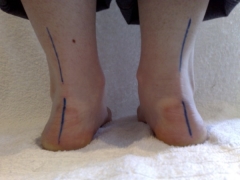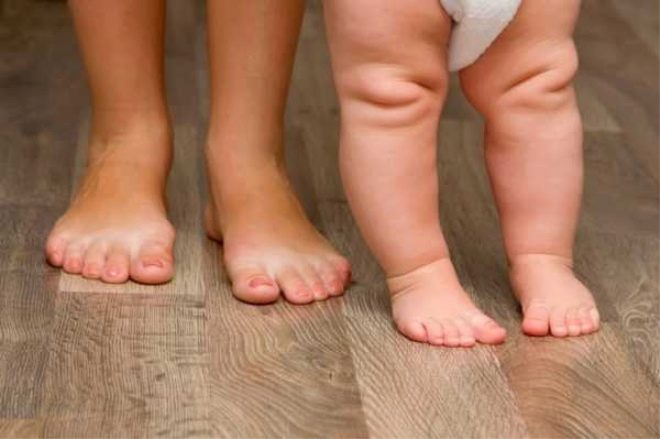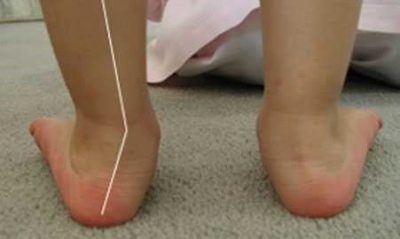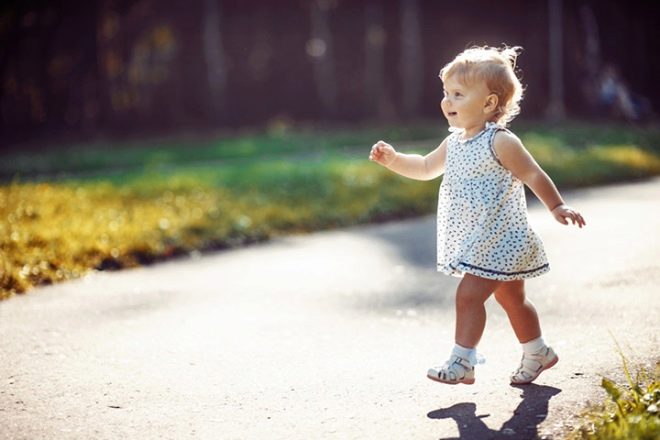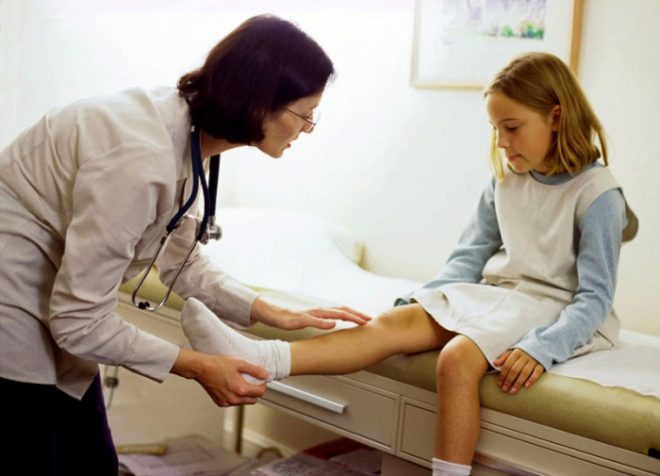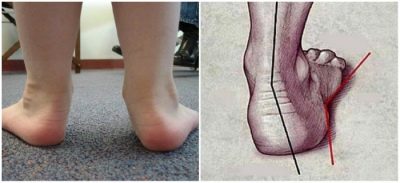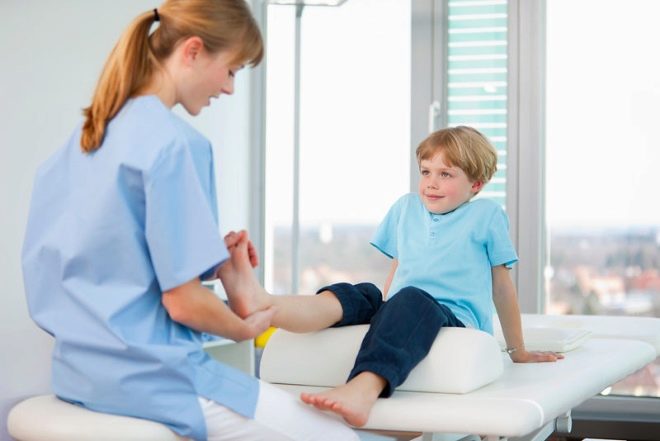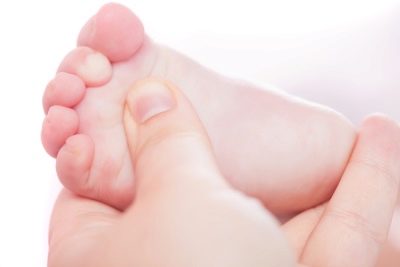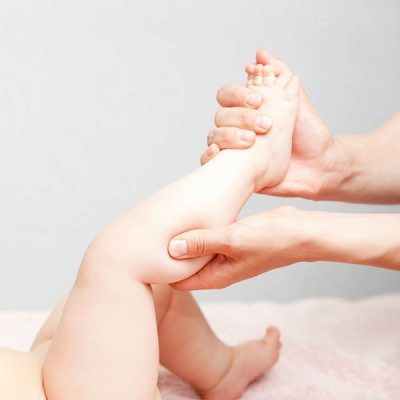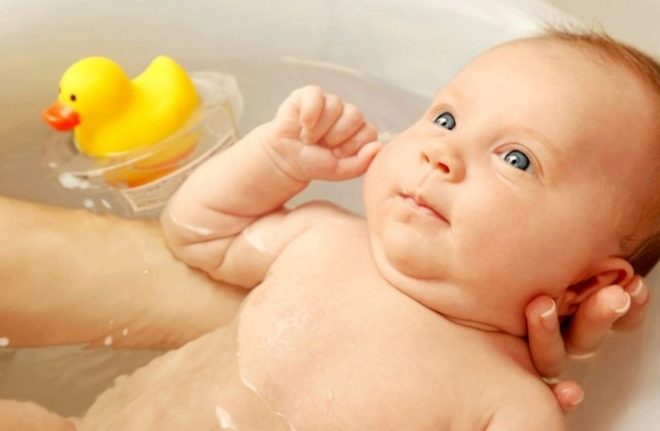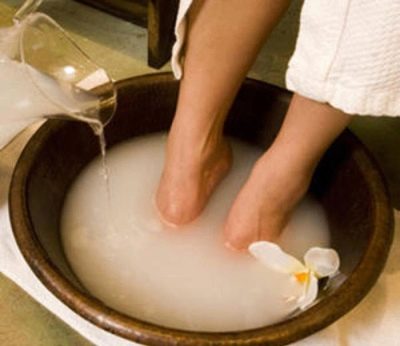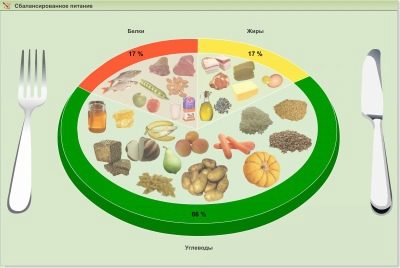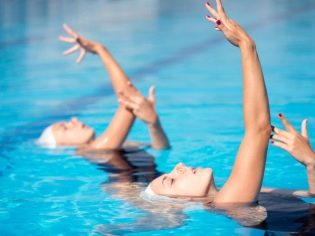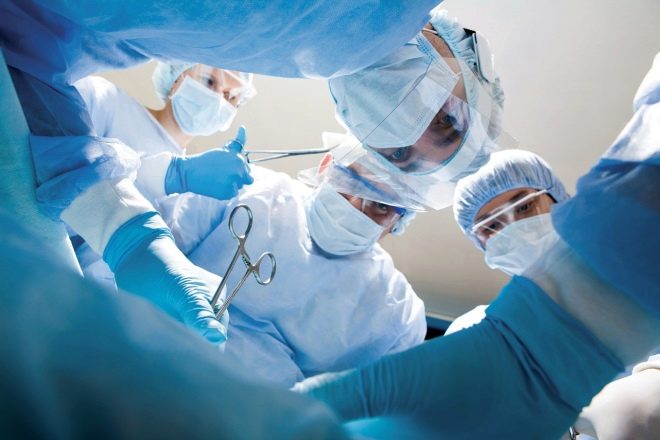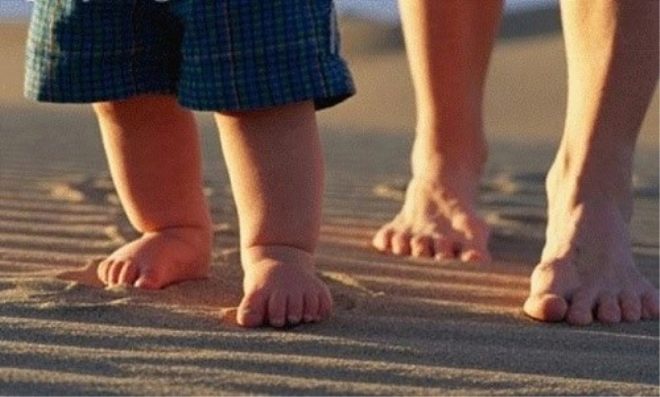Treatment for flat-valgus foot in a child
Flat-valgus foot - the most common pediatric orthopedic pathology. It is usually encountered in the first years of a child’s life, because it becomes obvious after the crumb begins to master independent walking. What to do if such a curvature is detected, we will tell in this article.
What it is
In fact, valgus deformity and flatfoot are different pathologies of the lower extremities, but in children it is often the combination of reduction in the arch of the foot, characteristic of flatfoot, and a change in the position of the foot under a load with inward displacement, typical of valgus deformity.
Valgus curvature is a deformation in which the child is in an upright position relies mainly on the inside of the feet, and the toes and heel are turned outwardly.
Normally, the legs should be parallel, that is, when looking at the two legs standing behind you, you can mentally draw two straight vertical lines. In a child with valgus deformities, these lines are refracted in the area of the ankle joint with a deviation to the outside, which causes the second name of the pathology - X-shaped deformation.
With flat feet everything is much more complicated. All children have a physiological flat foot from birth, so it’s impossible to consider this a pathology at 1-2 years. However, orthopedists consider the problem in a comprehensive manner, and in the medical record the child has a frightening parents diagnosis - flat-valgus deformity.
The reasons
Rarely enough, but valgus curvature may be congenital. For some reason, the lower limbs of the fetus in the womb begin to develop abnormally. Such legs can be seen almost immediately after the baby is born, and in 2-3 months the diagnosis is usually already made quite reasonably.
More often the pathology has the acquired character. Flat-valgus of the foot may be due to the excessive load on the weak legs of the baby. This happens if parents start to put the baby in a walker or jumper too early.
Up to 9 months verticalization devices cannot be used.
Tendons and leg muscles in babies are weak, and besides, some children have a congenital feature - weakness of the connective tissue, which is why any negative impact associated with a large load on the legs can lead to valgus deformity, which due to age features is a duet with physiological flatfoot in young children, and with a pathological flat foot in older children.
Most prone to the disease:
- premature and low birth weight babies;
- children with cerebral palsy and other neuromuscular pathologies;
- plump kids with excess weight;
- children with hip dysplasia;
- babies who have rickets;
- weak and often sick tots;
- children who are uncomfortable and too soft shoes that do not support the foot;
- children who have suffered injuries to the ankle, knee, muscles or tendons, and the metatarsal bones of the foot.
Symptoms
The flat-valgus foot in the early stages at an early age is difficult enough to distinguish for a non-professional parent eye. All the kids are clumsy, taking their first steps, they all scuffle their feet a little, and in most cases this is the most common thing.However, an orthopedic specialist can determine the beginning deformity at the very initial stage.
In children after one and a half years and older, incorrect foot setting is accompanied by symptoms such as fatigue, pain in the legs when walking, inability to run fast, swelling of the lower limbs in the evening after a day spent in an upright position.
When the Latin letter X in the outlines of the two set by a number of legs begins to be obvious, we usually talk about a serious degree of anomaly.
Flat-valgus foot - not a sentence. With timely started treatment, with a responsible and systematic approach to it by parents, the functions of the foot with mild pathology can be restored in full. It all depends on the extent of the disease.
The degrees themselves are measured by the angle of deviation of the vertical axis from the norm and the height of the arch of the foot. The greater the angle of deflection and the lower the height, the more severe the pathology is considered.
Surgical intervention may require 3–4 degrees of flat valgus deformity. Lighter violations of the foot are corrected conservatively.
Conservative treatment
Treatment will be complex. Individual activities and procedures will not bring the desired result. Also, parents should be mentally prepared for the fact that the process of getting rid of the strain will take a long time. The higher the degree of the disease, the more time it will take for treatment.
Sometimes it takes years to get therapy. In fact, the child’s lifestyle must change, all the prescriptions of the orthopedic surgeon must become an integral part of it.
Orthopedic shoes
Wearing special shoes, aimed at enforcing the correct setting of the foot, may be necessary for children with a 2–3 degree of pathology, as well as to babies who have had surgery on their feet at 3–4 degrees of deformity.
You should not try to pick up a shoe pair of their own. Medical couple is a problem of professionals. First, the orthopedic surgeon will give a substantiated conclusion and description, in which he will indicate the parameters of the anomaly, the degrees of deviation in the formulation of the foot, and also give well-defined parameters for the height of the foot of the particular patient.
With these recommendations, parents will have to go to the orthopedic salon, where they will pick up the necessary pair, and if the necessary footwear is not available, they will sew it to order for the baby.
For flat-valgus feet, orthopedic shoes should have high and solid backs, thick side so that the foot is securely fixed in the correct position. Such shoes have insoles and special orthopedic insoles.
This orthopedic shoe pair is expensive, it is this that often becomes the reason for the refusal to buy. Parents are trying to find a cheaper alternative on their own. Experience shows that this is impossible, since no manufacturer of ordinary children's shoes, even if it positions its goods as orthopedic, does not make steam for a twisted foot.
Even the best sandals from a good manufacturer are designed for normal foot setting, they are not designed to correct a curved leg.
That is why it is important to find the means and purchase genuine orthopedic shoes, which, along with other methods of treatment will necessarily give a positive result.
Massage
Massage is a prerequisite for successful recovery. You can do it, of course, with a professional masseuse, but, given that there will be many courses, it is better to save the family budget (massage is expensive) and learn how to do it yourself.
The basis of the massage - the classic techniques that are based on stroking, kneading and vibration effects.
The procedure for each massage zone is exactly this: at first, it is easy to stroke, massage more deeply, perform tapping and finish the session with light soothing strokes.
Massaging for flat-valgus deformity should be:
- feet, fingers, metatarsal areas of the foot, heel;
- ankle with circular motions around the ankle joint;
- knee joint in circular motions;
- front and back of the thigh;
- buttocks;
- lumbosacral;
- lower back.
You can complete a massage with a foot bath in which warm water will gradually become cold, parents should add cold water at a slow pace. Useful vigorous rubbing of feet, legs and thighs with a hard towel.
Usually, the course of massage is prescribed for 10-14 days, then after a 2-3 week break, the course is repeated. Massage allows you to improve the blood supply to the lower extremities, strengthen the ligaments and muscles.
Foot baths
And with a mild form of the disease, and with the deformation of 2-3-4 degrees, it is useful to make the child evening relaxing baths with a healing effect. For them use warm water with added decoction of medicinal plants.
Usually calming the feet, improve blood circulation, relieve puffiness and stress helps the medicinal chamomile decoction (for 250 ml of water - 1 teaspoon of dry grass collection) You can also use burdock root with the addition of a teaspoon of ordinary baking soda to a bath solution ready for the bath.
Paraffin therapy
This is a method of alternative therapy, which in no way cancels classical in this case massage, gymnastics, physiotherapy and wearing orthopedic shoes. However, this method has proven itself as an effective auxiliary treatment.
The essence of paraffin therapy is in laying on the sore spot of a heat compress from special purified paraffin wax, preheated, ductile and elastic.
In the case of a flat-valgus formulation, the procedure is called paraffin boots. From medical paraffin overlay it on the feet and ankle are formed "boots", which are wrapped on top of polyethylene. A warm compress is kept on the legs for about 15-20 minutes. This allows you to warm the muscles and ligaments, improve blood flow.
Procedures can be carried out by courses, as well as massage. For this, it is also not necessary to sign up for a paraffin therapy session at a medical center or clinic, paraffin is sold in pharmacies, and its home use will not cause any difficulties.
Gymnastics
The gymnastic complex in this pathology includes more than 20 exercises aimed at strengthening the muscles and ligaments of the lower limbs. Specialist-instructor in the exercise therapy room in the clinic at the place of residence will be able to teach parents and child physiotherapy.
Exercises are simple, accessible to everyone, they should be performed daily, at home. You can include in the complex a block of exercises in the standing position on a special massage mat. For these purposes, you can choose orthopedic applicator mat, made of rigid materials and having a sufficiently high hard topography or based on massage needles.
Orthopedic surgeon will also help you choose the right mat.
Physiotherapy
In the treatment of flat-valgus installation of the foot using the possibilities of electrophoresis, magnetic therapy, as well as electrical muscle stimulation. All these procedures at home is not possible, you will have to visit a clinic or a private medical center.
In this case, physiotherapy itself does not cure anything, but it strengthens and complements the effect that the rest of the complex therapy gives
Lifestyle
Parents of chubby children with overweight will have to put the child on a diet, because the weight affects the rate of deformation. The higher the weight, the faster the degenerative processes in the joints, ligaments and muscle tissue develop.
A pediatrician and a nutritionist come to the rescue, the child is given a special menu, rich calcium, magnesium, vitamins B, C, E, D, PP. All fast food, smoked foods, pickled and spicy foods are excluded from the child’s diet.
Fat meat is replaced with dietary, canned - with boiled and baked fish, fish patties. On the child's table should always be fruit and fresh vegetables.
If the kid led a sedentary lifestyle, the whole family is advised to stand up from the computer and more often make quiet walks, the kid with a flat-valgus foot should not play football and hockey, skate, but swimming and cycling will be beneficial.
The load on the legs should be increased gradually as the positive dynamics in the process of treatment. Regularly have to visit the orthopedist to monitor the situation from a professional point of view.
Surgical treatment
Surgically, the problem is solved only if the conservative treatment did not bring results, if instead of improving the child there was a deterioration, as well as with a 3-4 degree pathology outside the conservative treatment.
There are several methods by which surgeons can work on the foot. This reinforcement of tendons and plastic metatarsal pits. The most effective is the arthrosis of the subtalar joint.
Between the talus and calcaneus, a small cylinder-implant is implanted, which splits the bones and brings the foot to the correct position. During implantation, surgeons can lengthen the Achilles tendon, if it is short, and also shorten the tibialis tendon.
About three weeks after the operation, the child is in a cast, after which he begins to wear special orthopedic shoes, which he has already been done according to new standards, taking into account the results achieved by surgeons. After a year and a half, the implant is removed. The correct position of the feet is then maintained.
Before 8 years, children try not to do the operation, there is no special meaning, because the leg of a preschooler is growing intensively.
It is important to have time to operate on a child who needs it, up to 16-17 years old.Since the bone plasticity decreases after this age, and the probability of completely correcting the pathology even with the hands of a very good surgeon, is rapidly reduced.
After surgery for a long time, the child will have to undergo treatment, which in essence will resemble the conservative therapy described above. Massage, gymnastics, exercise therapy, physiotherapy and an active lifestyle will help to literally stand up. Moreover, getting up correctly is smooth and comfortable.
About what to do massage and gymnastics with flat-valgus foot in a child, see the following video.
